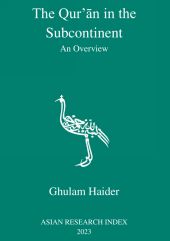1681283341208_56115224
Open/Free Access
94
When we go through the history of Sub-continent it becomes clear that Islam entered in this area during the period of rightly guided Caliphs. In 92 A.H when Muhammad bin Qasim conquered Sindh and some other parts of the present Pakistan, many Tab‘een and some companions came in the Sub-continent. It is famous that Shāh Walī Allāh (d:1176 A.H) is the first person in Sub-continent who translated Holy Qur’an in Persian and urged to ponder over its meanings. But it is not true. Makhdūm Nūḥ Hālāe’ (d:998 A.H/1589A.D) translated the Qur’ān in the Persian language and he must be regarded as the pioneer of the translation works. Shāh Walī Allāh had to face opposition on translating the Holy Book. Later on, his sons followed him produced translations in Urdu. Many scholars have written tafasir (commentaries) of the Quran. When we analyze these commentaries, it seems that influence of different schools of thought is visible on them. Although Hanfi School of Thought is in the majority but there is a division in Hanfis as well. Salfi approach has also influence in Sub-continent. In some tafsir, Sufi approach can also be seen. Moudidi is the first person who presented a theory of political Islam and his tafsir Tafhīm al- Qur’ān advocates this aspect. Hameed-ud-Deen Farahi is the first person in the Sub-continent who highlighted Nazm-e-Qur’an and his student Maulānā Amīn Aḥsan Iṣlāḥī advocated his approach in Tadabbur-e-Qur’ān.
To sum up it can be said that in Sub-continent there is variety of approaches for understanding Qur’an. This is blessing of Allah Almighty that Holy Qur’an is being understood in different ways and every scholar is getting pearls of guidance as per his ability and approach.
| Chapters/Headings | Author(s) | Pages | Info |
| Loading... | |||
| Chapters/Headings | Author(s) | Pages | Info |
